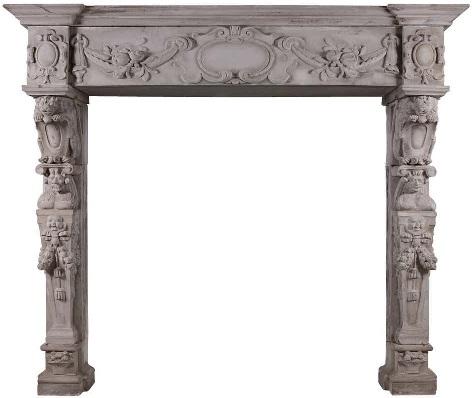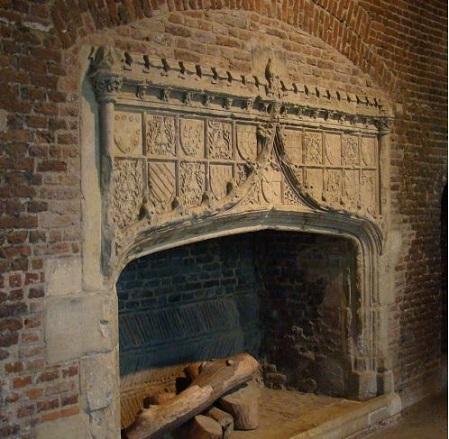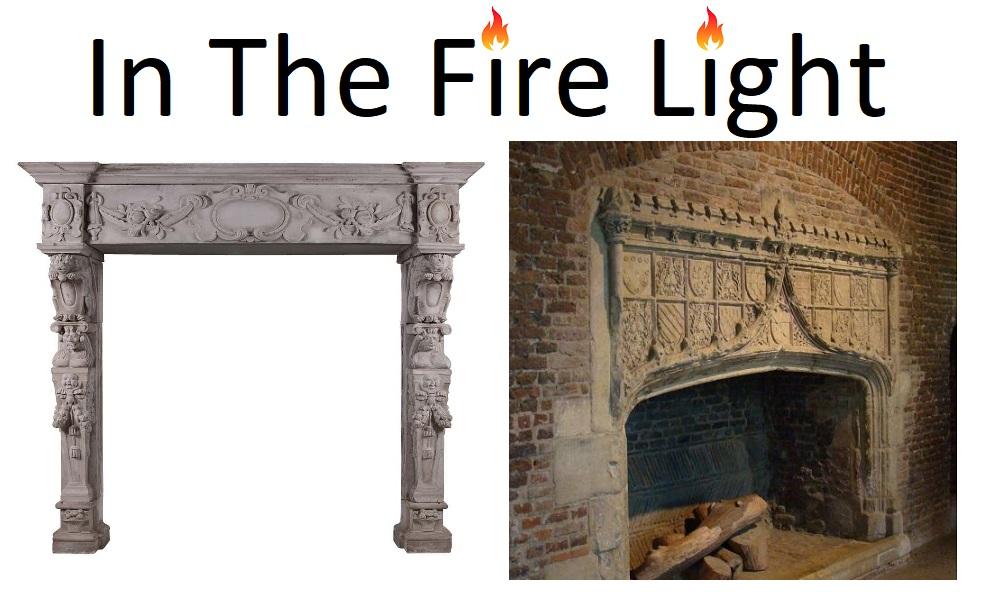This is an example of a very rare, 19th century carved stone Renaissance fireplace. The bracketed jambs with crouching lions, ionic capitals, carved male and female masks and basket of fruit to plinths. The frieze with carved fruit swags and central scrolled cartouche and associated detailing to side blockings. The stone has a grey wash finish with a lovely old patina. Recently removed from a 19th Century property in the European Quarter of Brussels.

The versatility ad permanence of natural architecture stone has been the first choice of discriminating builders and architects for millennia.
In studying the art of sculpture in Italy during the pre-renaissance it is important to remember that Renaissance sculptors had before their eyes tangible examples of classical Greek sculpture - the very work they admired - whereas painters had no examples of antique painting to refer to.
Almost from the outset, sculpture and painting were characterized by individualism, as progress became less and less a reflection of schools, and more about the work of individual artists. An equally important feature of Renaissance art was its naturalism. In sculpture, this was evident in the increase of contemporary subjects, together with a more naturalistic handling of proportions, drapery, anatomy, and perspective. A third feature was the reemergence of classical subjects and forms. Since the fall of Rome in the fifth century, Italy never completely forgot the sculpture of ancient Greece, nor could it ignore the visible mass of Roman ruins. The revival of classicism in sculpture began about the time of Nicola Pisano (c.1206-1278), and, though checked in the 14th-century, continued throughout the 15th-century.
Italian Renaissance art was primarily religious art. Less so perhaps than during the Romanesque or Gothic periods - after all Europe was becoming wealthier - but Christianity remained a dominant force in the lives (and art) of princes and paupers alike.
During the fifteenth century, Italy was composed of a mixture of differing regional entities, including the Duchies of Milan and Savoy, and the Republics of Venice, Genoa, Florence, and Siena. Furthermore, the States of the Church owned a large chunk of Central Italy, while the whole of Southern Italy including Sicily belonged to the Kingdom of Naples. Generally speaking, these communities were ruled in monarch-fashion by families and individuals, many of whom became important patrons of Renaissance art, including the art of sculpture as well as painting. The most important ruling families included the Sforza and Visconti at Milan, the Gonzagas in Mantua, the Montefeltro at Urbino, the Este at Ferrara and Modena, the Malatesta at Rimini, the Bentivoglio at Bologna, and the powerful Medici family in Florence.
Sculpture during the late-15th and early-16th-century gradually assumed a greater individual importance in relation to architecture and painting. Thus architecture actually became more sculpture-like: pilasters were replaced by columns; cornices and mouldings were endowed with greater projection, allowing for new patterns of light and shade. In wall tombs, figures were given a new prominence, with architectural construction being regarded as mere backdrop. Even entire buildings were sometimes treated as mere backdrops for sculptured figures. In addition, the entrancing bas-reliefs of the Early Renaissance were superceded by haut-relief and statues. Modelling, posture, and movement of drapery became the new criteria for excellence, as also did the creation of colossal statues. The influence of classical Greek sculpture was maintained if not increased, but rarely led to the reproduction of antique forms.

Donato di Niccolo` di Betto Bardi, more commonly known as Donatello (1386-1466), is regarded by many as the most influential sculptor of his age. Just as Michelangelo was the greatest sculptor of the 16th century and Bernini the greatest of the 17th, Donatello was undoubtedly the master sculptor of the 15th century.
His marble statue of the bald-headed prophet Habakkuk nicknamed "Il Zuccone" (the Pumpkin) is extremely naturalistic, all the more remarkable considering it was intended to be placed in a niche in the Campanile of Florence's Duomo.
Donatello's bronze statue of the youthful David is one of the most revolutionary and ambiguous Renaissance works. The strangely disturbing figure of the effeminate youth in a fancy hat and boots who holds a sword standing on the head of the slain Goliath is also a sculptural masterpiece of the highest quality.
To find out more about this piece please visit our website where you can view it & many other rare & unusual marbles.



